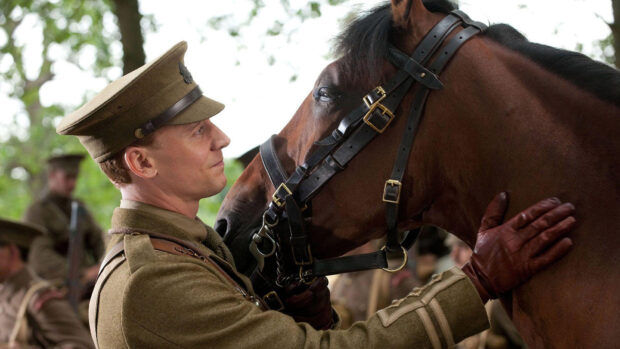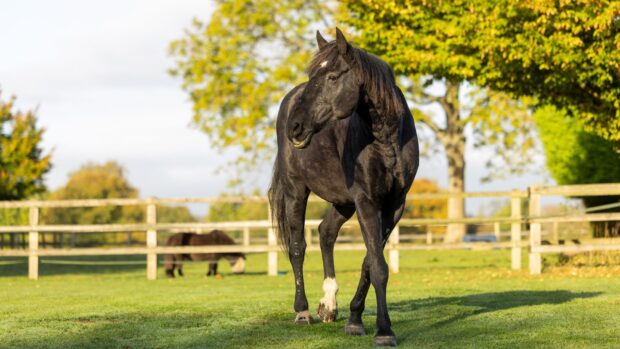Always gleaming and endlessly patient, the Household Cavalry’s horses, known as Cavalry Blacks, are a uniquely British institution.
But what is life really like for them? And how are they chosen for a career of ceremonial duties and guarding the royal family?
In a new book published today (31 March) Juliet Blaxland, who is married to a Household Cavalryman, explores how a typical horse in the regiment is trained for his special military role.
Using Juliet’s unique illustrations, “Nimrod: A Cavalry Black from foal to retirement” takes us from Nimrod’s life as a foal in Ireland to his first experience of being on duty, holidays in Norfolk and taking part in the State Opening of Parliament.
Along the way, this easy-to-read book — which would make the perfect present for any horse lover or tourist visiting Britain — unveils fascinating details about these horses, from their conformation to how they are named.
Continued below…

Household Cavalry horses enjoy a trip to the seaside [PICS]
The Household Cavalry leaves London for a month to train in Norfolk by the sea
11 things you might not know about Household Cavalry horses
1. The horses have been helping to guard our royal family and taking part in ceremonial occasions since Charles II was restored in 1660.
2. A ceremonial horse has to carry about four stone (25kg) in dead weight of kit, plus a man.
3. Cavalry Blacks tend to be geldings — there are no stallions — and are at least 16hh, but are often bigger.
4. The Riding Master, who oversees all selections, looks for horses that are preferably unbroken, of good weight, good attitude, clean-limbed, good outlook, no blemishes, and straight movers.
5. Most horses are purchased when they are three or four, and are then sent to the Royal Army Veterinary Corps Depot, at Melton Mowbray in Leicestershire, from where they are forwarded to the Household Cavalry Mounted Regiment in London, for selection by squadron leaders.
6. They are usually named after battles or significant places, and each year the new horses’ names begin with a particular letter.
7. When a horse joins the Household Cavalry, a regimental number is stamped on its hooves.
8. In 1982 four men and seven horses of the Household Cavalry were killed in the Hyde Park bombing. Whenever the Household Cavalry now rides from Knightsbridge Barracks to Horse Guards to change the guard on duty, they salute the memorial.
9. During the summer the regiment spend four weeks in Norfolk as part of their annual Regimental Training Camp – and the horses are taken for a splash in the sea.
10. Since 1997 all regimental horses have been fitted with a microchip for identification purposes.
11. The average age of retirement for regimental horses is about 17 or 18, but a few make it well into their 20s.
A percentage of proceeds from “Nimrod: A Cavalry Black from foal to retirement” will be donated to The Household Cavalry Foundation — a charity supporting casualties, veterans, horses and heritage.
Price: £7.99
ISBN: 978-1-908809-37-7
Visit: www.allenbooks.co.uk




